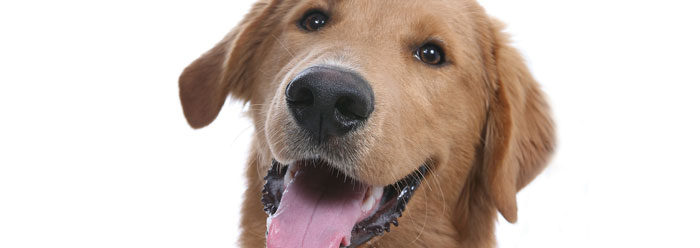Overall, there are more dogs than children in American and British households.1 Dogs have become a huge part of humans’ lives. How and when did they get here?
Chromosomes show that “the domestic dog, Canis lupus familiaris, is a grey wolf.”2 Additional DNA studies provide “strong evidence” that all dog breeds descended from a wolf population that was domesticated in southern East Asia.3 Dogs, wolves, coyotes, and foxes can interbreed, so they represent the created dog kind. Over 230 dog breeds have been defined in the 4,300 or so years of post-Flood history.4
In his 300 B.C. book Historiae Animalium, Aristotle listed the dog separately from the wolf and fox. But University of Otago archaeologist Helen Leach wrote that “systematic breeding only emerged within the past 300 years.”5
Over 200 breeds were produced in only 300 years? That doesn’t fit with evolution’s theory of gradual change, in which new features are supposedly favored by natural selection over vast time periods. A recent experiment proved that dogs most likely changed in just a few generations through pre-designed genetic programming and intentional breeding.
In a study published in Bioessays in 2009, Russian researchers selected foxes for “tameability.” The experiment began “about 50 years ago” and has produced scores of foxes that look very different from their ancestors.6
Researchers selected foxes that were the least aggressive and then bred them. They chose 100 females and 30 males “as the initial parental generation.” Then, they carried forward the tamest approximately 10 percent into each successive generation. “As a result of such a rigorous selection, the offspring exhibiting the aggressive and fear avoidance responses were eliminated from the experimental population in just two-three generations of selection,” the study authors wrote.6
They didn’t need thousands of years to produce these changes, just three generations. And at the sixth generation, fox pups eagerly sought human contact, complete with wagging tails, “whining, whimpering, and licking in a dog-like manner.”6
Quite unexpectedly, however, the newly tamed foxes displayed standard mammalian traits of domestication. Wild horses, cows, sheep, pigs, dogs, and rabbits have stable traits like erect ears, straight tails, uniform coat colors, restricted breeding seasons, and similar body sizes. However, the tame varieties often have floppy ears, curled tails, spotted coat colors, variations in coat textures and lengths, no set breeding seasons, and marked skeletal size and proportion differences.
Natural selection was supposed to have “fixed” the stable traits into the wild animals over their supposedly countless past generations. But the researchers watched their recently wild fox population rapidly unfold new trait variations that looked just like those of domesticated dogs, cows, and rabbits. Clearly, natural selection has not been filling its billing.
Also, chance-based genetic mutations could not produce the same trait variations in so many different mammals. For this reason, the authors wrote, “Finally, it is difficult to interpret the changes in the domesticated foxes as a result of randomly arisen new mutations.”6
Instead, changes in gene regulation must have caused the trait variations. Differing gene activity during development resulted in multiple simultaneous physical changes. That’s not evolution by mutations, but variations by design. According to the biological evidence, dogs could have developed from a wolf ancestor into “man’s best friend” in only three dog generations by selective breeding in the recent past.
Editor's note: Regarding the interbreeding of foxes with coyotes, see Van Gelder, R. G. 1977. Mammalian Hybrids and Generic Limits. American Museum Novitates. 2365: 10. Van Gelder states:
Canis latrans X Vulpes vulpes was reported at Bridgeton, New Jersey. Mr. Henry Ricci, Curator of the Cohanzick Zoo at Bridgeton, has kindly provided me with the details: A male coyote born April 5, 1971, was donated to the zoo in August of that year by a returning soldier. It was at first housed adjacent to a young female American red fox (Vulpes vulpes) that had been born about the same time as the coyote. Eight months later the two animals were put in the same cage and were compatible. During the first and second weeks of February 1973, the animals were seen to mate and on April 9, 1973, the vixen gave birth to two male pups. They were left with the female who began to ignore them on April 12. One was found dead that morning. The second pup was removed and hand fed, but died the evening of April 12 "probably due to congestion and exposure" according to Dr. Ernest Zirkle, the zoo's veterinarian. Judging from photographs I have seen of the parents, there seems no reason to doubt their identification, nor does the appearance of the cage suggest entry by a local wild Vulpes male. The pups were preserved and are in the possession of Mr. Ricci and Dr. Zirkle.
References
- Haveman, H. Dogs take a lead over children. CNN International. Posted on cnn.com March 5, 2004, accessed November 15, 2011.
- Pendragon, B. 2011. A review of selected features of the family Canidae with reference to its fundamental taxonomic status. Journal of Creation. 25 (3): 79-88.
- Ahlfort, K. Genetic Study Confirms: First Dogs Came from East Asia. Royal Institute of Technology news release, November 23, 2011.
- The American Kennel Club lists over 235 breeds, 173 of which are eligible to compete at AKC events. See the Complete Breed List posted on akc.org.
- Leach, H. R. 2007. Selection and the Unforeseen Consequences of Domestication. In Cassidy, R. and M. H. Mullin, eds. Where the wild things are now: domestication reconsidered. Oxford, UK: Berg, 72-73.
- Trut, L., I. Oskina and A. Kharlamova. 2009. Animal evolution during domestication: the domesticated fox as a model. Bioessays. 31 (3): 349-360.
* Mr. Thomas is Science Writer at the Institute for Creation Research.
Cite this article: Thomas, B. 2012. On the Origin of Dogs. Acts & Facts. 41 (1): 16.






















